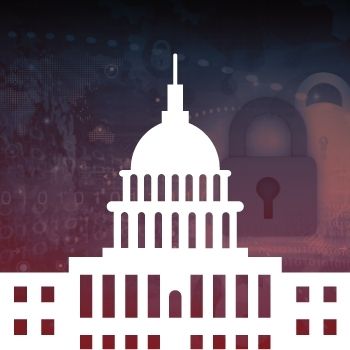Cyber Security: White House Adopts Zero Trust
Federal Government Embraces Zero Trust
On January 26th, 2020 the White House adopted a Federal zero trust architecture strategy requiring all federal agencies to adopt zero trust cyber security practices by the end of Fiscal Year 2024.1 With the current rise in nation-state attacks, cybercriminal activity, as well as discoveries of new zero day vulnerabilities, this move by the U.S. Government is unsurprising. In September of 2021, OMB released an initial draft of its strategy to combat the growing cybersecurity threat and opened it to public comment. Zero trust architecture is recognized by almost all security experts as the most effective way to protect an organizations’ systems, networks, and data from malicious actors.

What is Zero Trust Architecture?
Zero Trust Architecture is a security framework that continuously and consistently authenticates users throughout every interaction.2 There is never assumed trust between parties, instead each individual is required to re-authenticate every time they gain access to an organization’s systems. Zero Trust uses strong authentication protocols to prevent lateral movement between networks. Comprehensive Zero Trust architectures encompasses all users, applications, and infrastructure.
Why is Zero Trust needed in Cyber Security?
Zero Trust provides additional cyber security controls over an organization’s networks, systems, and data. Eliminating trust policies also eliminates the ability of malicious attackers to exploit those policies. Cyber-attacks increased by 27% between 2020 and 2021.3 Between lone actors and Nation State attacks, businesses are being bombarded by those seeking to exploit vulnerabilities. Keeping an up-to-date security policy that employs zero trust architecture is the best way to ensure your business is protected from outside attackers. Don’t give hackers an opportunity into your network. Talk to your IT team today about how implementing Zero Trust can better protect your data and your company.
Do you have additional questions? We’d be happy to answer them! Feel free to reach out to our security experts for more information how how to better protect your organization’s systems.
Related Blog Posts

What to Expect for CMMC 2.0 Assessments
What to Expect for CMMC 2.0 Assessments So now you have put in all the work to meet the requirements of CMMC 2.0 level 1, 2, or 3, but what’s next? Once the rules are finalized and being implemented, companies will need to be able to certify that they are...

CMMC 2.0 Requirements: Level Three
CMMC Requirements: Level Three Now we enter the most nebulous category of CMMC 2.0 requirements: level three. While we know where the requirements will come from, we don’t know exactly how many will be added from the NIST 800-172 publication. While there are...

CMMC 2.0 Level 2 Requirements
CMMC 2.0 Level 2 CMMC 2.0 Level 2-that’s where things really start to get serious. While the controls required aren’t incredibly difficult, there are probably a fair number that most companies haven’t considered before, especially since there are 110 of them. And I am...

CMMC 2.0 Level 1 Requirements
We’re going to start digging through the CMMC levels, starting with CMMC 2.0 Level 1. I will go through the different protection areas and briefly describe what they mean. I don’t intend for this to be a complete guidance, but more an introduction to allow you to be...

Newsletter
Subscribe To Our Newsletter
We've been creating some excellent webinars and local events. Join our mailing list for the latest on industry trends and strategies for cyber defense.
Need Immediate Assistance?
Give us a call (405) 771-6399
Headquarters
3841 E Danforth Rd, Ste 106, Edmond, OK 73034
110 E. Houston St, 7th Floor, San Antonio, TX 78205
Copyright 2024 - Critical Fault, LLC. | Privacy Policy


